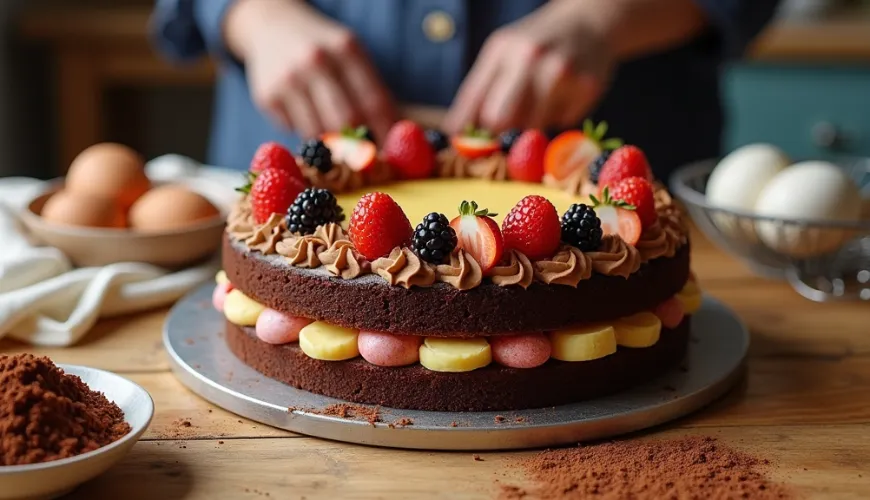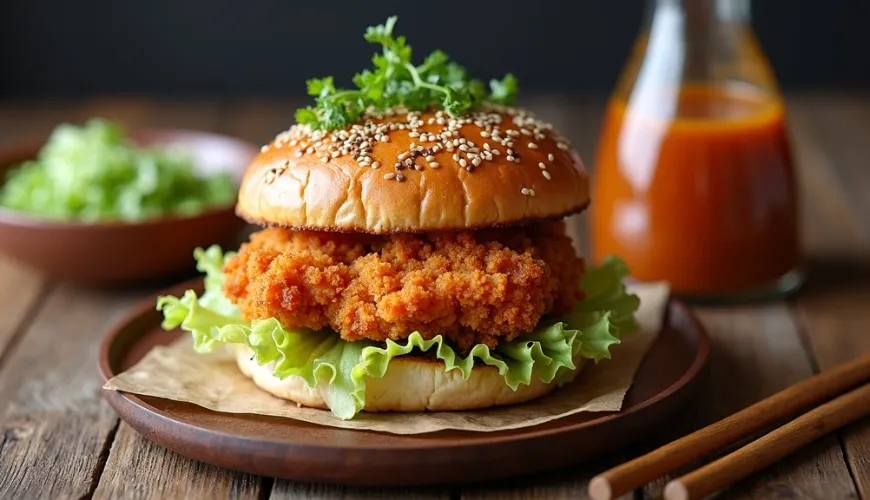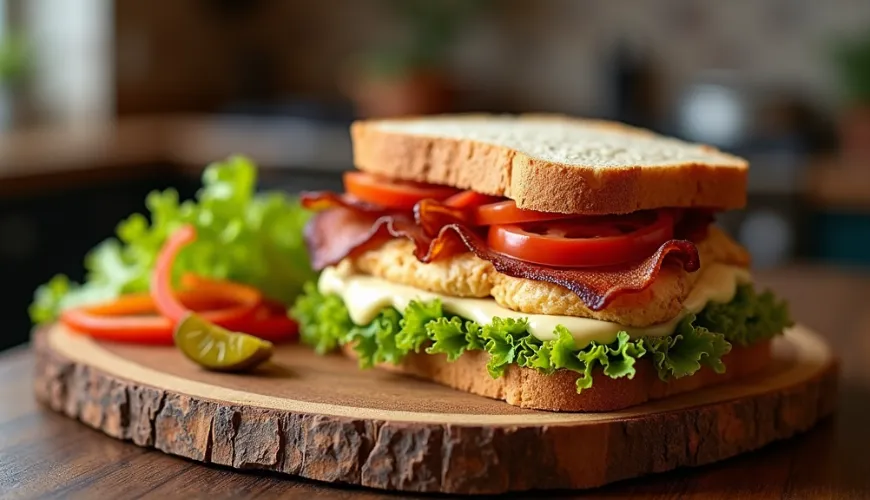
Recipe for Cuban Cake That Will Impress Any Celebration

The Sweet Legend Known as the Cuban Cake
There are desserts that carry more than just taste. They are pieces of history, nostalgia, and tradition passed down from generation to generation. One such dessert has been popular in Czech households for decades – the Cuban cake. Although its name evokes hot evenings in Havana, its actual origins and popularity are more closely tied to Central Europe than one might initially think.
The cake, which became a staple at home celebrations in the 80s and 90s, delighted many families with its distinct taste, simple ingredients, and especially the fact that it could be made even when some ingredients were scarce. People today return to it not only out of nostalgia but also due to the trend of home baking and a return to the classic recipes of our grandmothers.
What Is the Cuban Cake?
The Cuban cake is a sweet combination of cocoa sponge, buttercream, rum aroma, and a juicy fruit base – most often from canned fruits like peaches or pineapple. The characteristic feature is the emphasis on the contrast of flavors and textures: soft dough, thick cream, crunchy nuts, or chocolate on top. It is not uncommon for the cake to be made in a baking tray, which makes it easier to divide and serve – hence it is often referred to as a Cuban cake on a tray.
Many families have their own recipe, but the base remains similar. Some versions include coconut, others a chocolate glaze, or even caramel. And although the cake does not bear any official designation of a protected recipe, the true Cuban cake is the one that evokes childhood memories. A taste you remember from Sunday visits, school gatherings, or festive moments.
Where Does the "Cuban" Name Come From?
Although there is some debate about the origin of the name, most gastronomic historians agree that the name refers more to the atmosphere and flavor tones rather than geographical origin. Rum, which is an important ingredient of this dessert, is a typical product of the Caribbean, often associated with Cuba. When you add exotic fruit and a dark cocoa base, you instantly have a cake that "smells like Cuba," even if it was created somewhere entirely different – perhaps in a Central European confectionery.
One variant of this dessert is called the Cuban cake Maršálek, probably named after a specific confectionery version that became popular in a particular region. This name is sometimes used today as a synonym for a more pronounced, "luxurious" version of the classic Cuban cake, enriched perhaps with a stronger layer of rum, glaze, or decoration.
How to Bake a Cuban Cake at Home?
A good Cuban cake does not require exotic ingredients but rather a bit of patience and the desire to create. If you're looking for a proven recipe for Cuban cake, here is one of the popular classic versions:
Recipe for Authentic Cuban Cake (on a tray)
For the batter:
- 5 eggs
- 200 g granulated sugar
- 200 g semi-coarse flour
- 1 baking powder
- 2 tablespoons cocoa
- 2 tablespoons hot water
For the cream:
- 250 g butter
- 150 g powdered sugar
- 2 egg yolks
- 1 vanilla sugar
- 2 tablespoons rum
For the filling and decoration:
- 1 can of peach or pineapple compote
- 100 g chopped walnuts
- grated chocolate or chocolate glaze
The process is simple: beat the eggs with sugar into a foam, add flour mixed with cocoa and baking powder, pour in the water, and pour the batter onto a tray with baking paper. Bake at 180 °C for about 20 minutes. After cooling, top the cake with fruit from the compote, pour over the prepared buttercream, and sprinkle with nuts and chocolate. After a few hours of chilling, the cake is ready to be sliced and served.
Such a Cuban cake on a tray is ideal for celebrations because it cuts easily into portions and holds its shape well. Moreover, it can be prepared the day before, saving time when preparing for a larger family gathering.
Home Baking as a Return to Traditions
In recent years, there has been a noticeable renaissance of home baking. People are rediscovering recipes from their grandmothers' cookbooks, rewriting notes from smudged notebooks, and searching for the authentic flavors of childhood. The Cuban cake plays an important role in this trend because it meets several expectations: it is simple, the ingredients are commonly available, and yet the result appears festive.
An example is Mrs. Alena from Brno, who decided to prepare her favorite version of the cake for her husband's birthday celebration after thirty years. "I didn't want anything modern with macaroons; I wanted something that reminds me of home. When I brought the cake, everyone's eyes lit up. And that's the greatest reward for me," she says with a smile.
Many people adjust the recipe to their preferences – some reduce the amount of sugar, others replace traditional butter with a plant-based alternative, or add coconut to the cream. The important thing is that even such modifications preserve the essence of the cake: a rich, aromatic, and delicious taste that evokes a sense of home.
From a healthier cuisine perspective, there are also versions that are more environmentally friendly and kinder to our bodies. For example, instead of regular sugar, cane sugar can be used, flaxseeds can replace eggs, and the buttercream can be substituted with a plant-based cream made from cashews or oat milk. Such a vegan Cuban cake may sound like an experiment, but the results often surprisingly exceed expectations.
Why Is the Cuban Cake Still Popular?
Perhaps it is the combination of flavors that makes it timeless. Aromatic rum, sweet fruit, smooth cream, and a cocoa base – all of this combines into a dessert that delights both adults and children. Moreover, it is a cake that can withstand various modifications and still remain "its own." It doesn't pretend to be a modern gastronomic fad but brings something much more valuable – continuity, memories, family stories.
Whether you're looking for a recipe for a Sunday afternoon, a dessert for a celebration, or just a way to make your day more pleasant, the Cuban cake is a safe bet. And if you've never tried baking it, perhaps now is the right time. After all, as an old saying goes: "Those who live sweetly, live longer."

